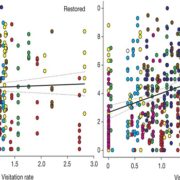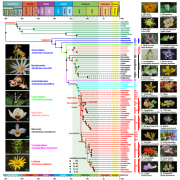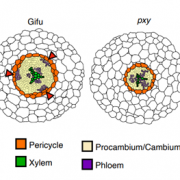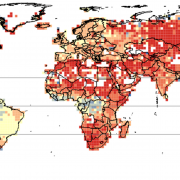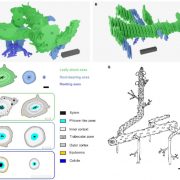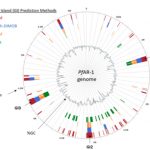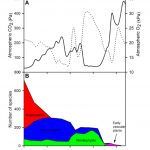Effector gene reshuffling involves dispensable mini chromosomes in wheat blast fungus (PLOS Genetics)
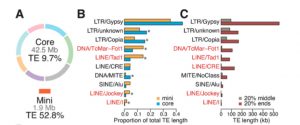 The emerging disease wheat blast is devastating and has the capacity to cause 100% yield loss. Wheat blast is caused by the fungus Magnaporthe oryzae pathotype Triticum (MoT). This pathotype is distinct from most of the pathotypes that causes disease in other plants such as M. oryzae Oryza (MoO) in rice. Very little is known about MoT, however rice blast disease has been very well studied and numerous effector genes that contribute to virulence and host specificity have been identified. Effector genes in filamentous pathogens are mostly present on rapidly evolving, transposon rich chromosome regions that are part of the ‘two speed’ genome, along with the slowly evolving core chromosome regions. Peng et al. report the genome assembly of a recently emerged highly aggressive MoT isolate B71, performed by developing a new scaffolding technology called LIEP (Long Insert End-Pair Sequencing). The B71 genome has a mini chromosome that is highly enriched in transposons and effector genes, similar to other newly emerged virulent strains. This resembles the lineage-specific chromosomes in the Fusarium oxysporum species complex. The authors speculate that the mini chromosome provides for rapid evolution, transfer, gain and loss of effector genes, and contributes to the ability of the pathogen to overcome plant resistance. (Summary by Mugdha Sabale) PLOS Genetics 10.1371/journal.pgen.1008272.
The emerging disease wheat blast is devastating and has the capacity to cause 100% yield loss. Wheat blast is caused by the fungus Magnaporthe oryzae pathotype Triticum (MoT). This pathotype is distinct from most of the pathotypes that causes disease in other plants such as M. oryzae Oryza (MoO) in rice. Very little is known about MoT, however rice blast disease has been very well studied and numerous effector genes that contribute to virulence and host specificity have been identified. Effector genes in filamentous pathogens are mostly present on rapidly evolving, transposon rich chromosome regions that are part of the ‘two speed’ genome, along with the slowly evolving core chromosome regions. Peng et al. report the genome assembly of a recently emerged highly aggressive MoT isolate B71, performed by developing a new scaffolding technology called LIEP (Long Insert End-Pair Sequencing). The B71 genome has a mini chromosome that is highly enriched in transposons and effector genes, similar to other newly emerged virulent strains. This resembles the lineage-specific chromosomes in the Fusarium oxysporum species complex. The authors speculate that the mini chromosome provides for rapid evolution, transfer, gain and loss of effector genes, and contributes to the ability of the pathogen to overcome plant resistance. (Summary by Mugdha Sabale) PLOS Genetics 10.1371/journal.pgen.1008272.



